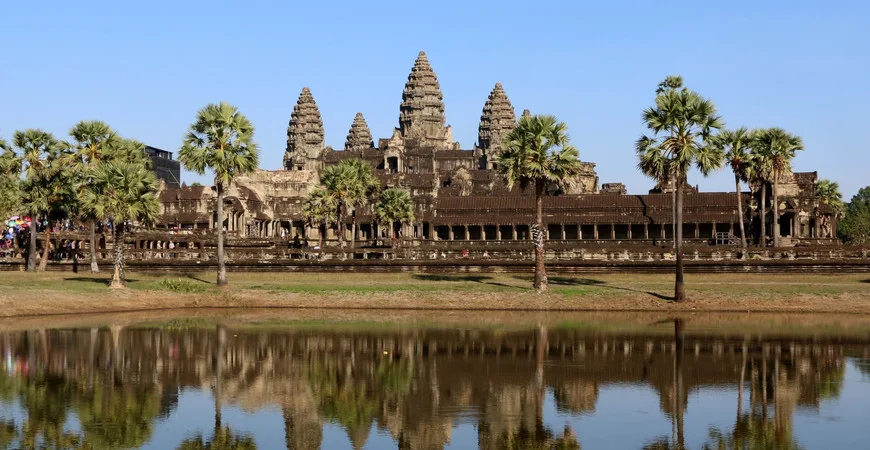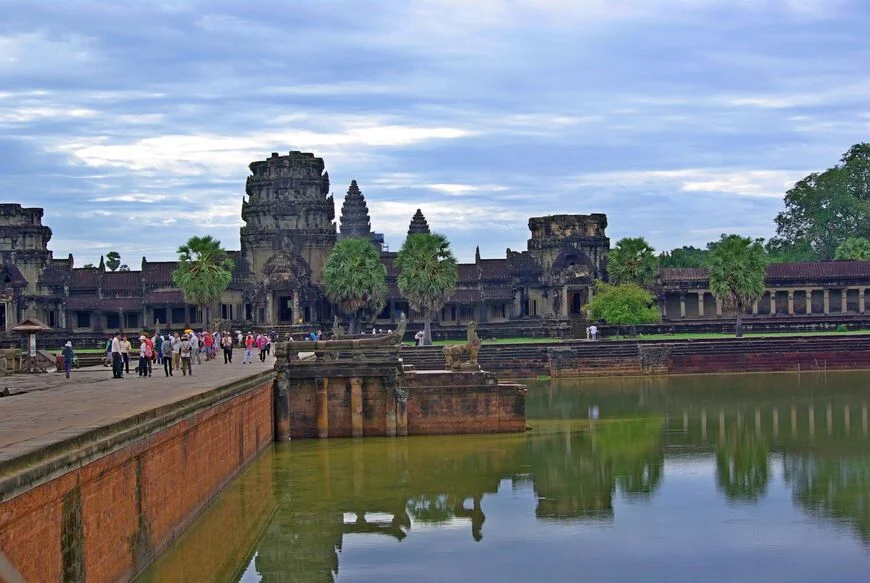Angkor Wat is a huge Hindu temple complex in Cambodia, which is often called the "eighth wonder of the world." This is the world's largest religious building dedicated to the god Vishnu. The silhouette of Angkor Wat is the national symbol of Cambodia, adorns the flag and coat of arms of the state. This striking and expressive example of the architecture of the Khmer Empire attracts many tourists to the country.
 |
| Angkor Wat |
The Angkor Wat temple complex symbolizes the universe, and its five towers in the shape of lotus buds symbolically represent the heavenly abode of the gods - Mount Meru with its five peaks.
 |
| Angkor Wat |
Inside the central tower, which rises above ground level by 65 m, is hidden the lingam of Shiva, a symbol of the life-giving divine power. Around there are 4 lower towers with their own courtyards and galleries that enclose them. From any point of view, you can see only three of the five towers of Angkor Wat.
The temple complex consists of three levels with terraces and galleries that rise as you move towards the central tower. These three levels symbolize parts of the legendary Mount Meru, in the upper part of which the gods lived, in the middle one lived people, and below, under the mountain, demons. Angkop-Bat is essentially a huge three-step pyramid surrounded by a huge moat 3.6 km long, symbolizing the world's oceans.
 |
| Angkor Wat |
The Angkor Wat temple covers an area of 200 hectares, including the surrounding moat 190 m wide.
The walls of Angkor Wat are covered with intricate carvings, among which you can see images of deities, battle scenes and many apsaras - heavenly maidens, according to the legends of delighting those who have gone to heaven. In Angkor Wat, you can count more than 2 thousand images of apsaras, and all of them are not repeated. The total area of the sculptural works of the Angkor Wat complex is about 2 thousand square kilometers.
How to get to the temple city
The temple complex is located 240 km west of Phnom Penh and 6 km north of Siamriap.
 |
| Angkor Wat |
A paragraph of history
The complex of religious buildings of Angkor belongs to the 10-12 centuries, in those years it was one of the largest cities in the world, its temples were known far beyond the borders of the Khmer empire. In 1431, Siam's troops practically destroyed the city, forcing the inhabitants to leave it. Since then, Angkor and more than 100 remaining palaces and temples have lurked in a lush rainforest. Until the end of the 19th century, the French naturalist Anne Muo published a number of works devoted to Angkor. It is said that even Rudyard Kipling wrote his "Jungle Book" about Mowgli after visiting this place. In 1992, the temple complex was taken under the protection of UNESCO.
